Country
Operator Image
Crash of a Boeing 737-291 in Colorado Springs: 25 killed
Date & Time:
Mar 3, 1991 at 0944 LT
Registration:
N999UA
Survivors:
No
Schedule:
Peoria – Moline – Denver – Colorado Springs
MSN:
22742
YOM:
1982
Flight number:
UA585
Crew on board:
5
Crew fatalities:
Pax on board:
20
Pax fatalities:
Other fatalities:
Total fatalities:
25
Captain / Total hours on type:
1732.00
Copilot / Total hours on type:
1077
Aircraft flight hours:
26050
Aircraft flight cycles:
19734
Circumstances:
On March 3, 1991, a United Airlines Boeing 737, registration number N999UA, operating as flight 585, was on a scheduled passenger flight from Denver, Colorado, to Colorado Springs, Colorado. Visual meteorological conditions prevailed at the time, and the flight was on an instrument flight rules flight plan. Numerous witnesses reported that shortly after completing its turn onto the final approach course to runway 35 at Colorado Springs Municipal Airport, about 0944 mountain standard time, the airplane rolled steadily to the right and pitched nose down until it reached a nearly vertical attitude before hitting the ground in an area known as Widefield Park. The airplane was destroyed, and the 2 flight crewmembers, 3 flight attendants, and 20 passengers aboard were fatally injured.
Probable cause:
A loss of control of the airplane resulting from the movement of the rudder surface to its blowdown limit. The rudder surface most likely deflected in a direction opposite to that commanded by the pilots as a result of a jam of the main rudder power control unit servo valve secondary slide to the servo valve housing offset from its neutral position and overtravel of the primary slide.
Final Report:
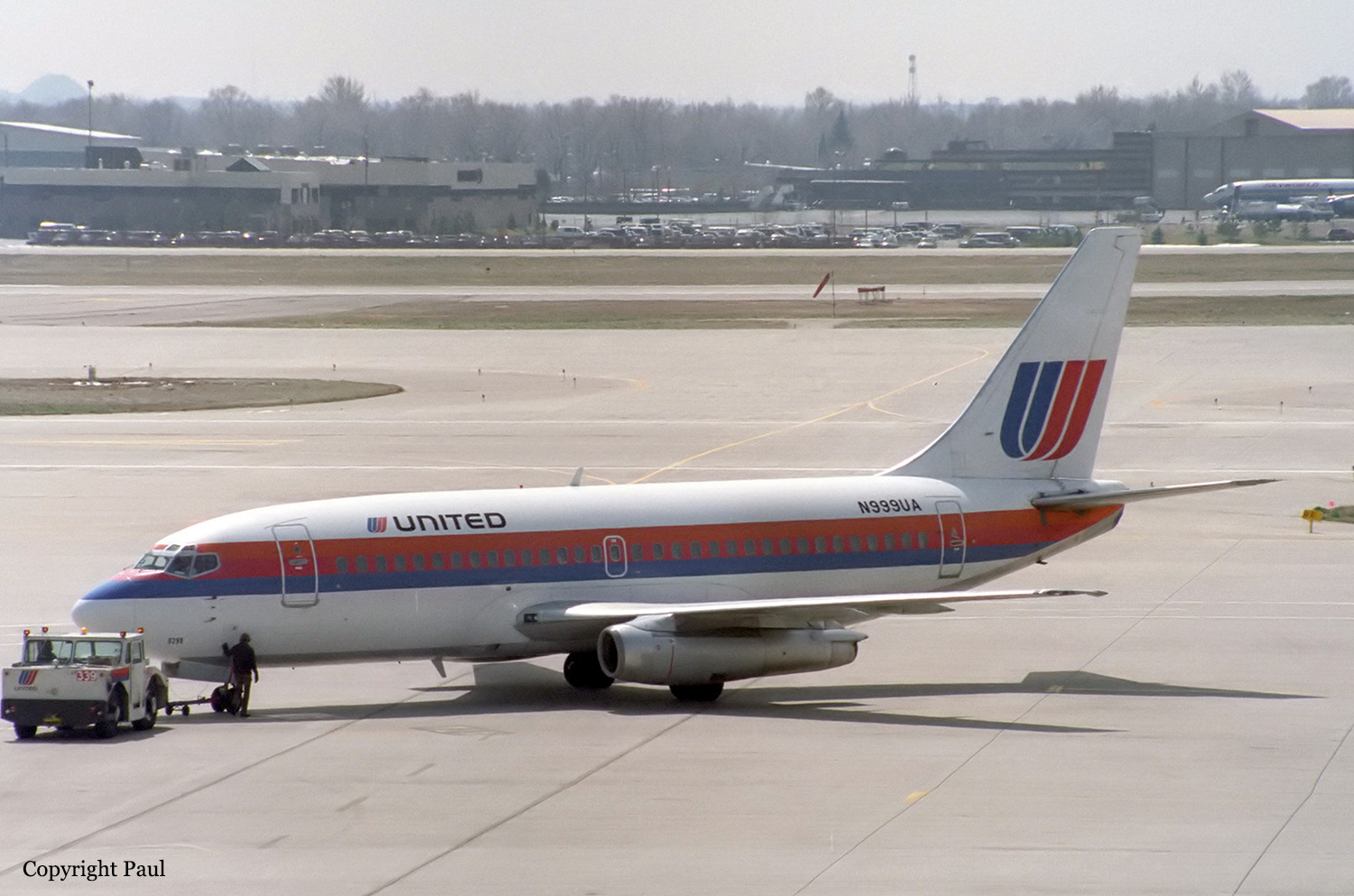
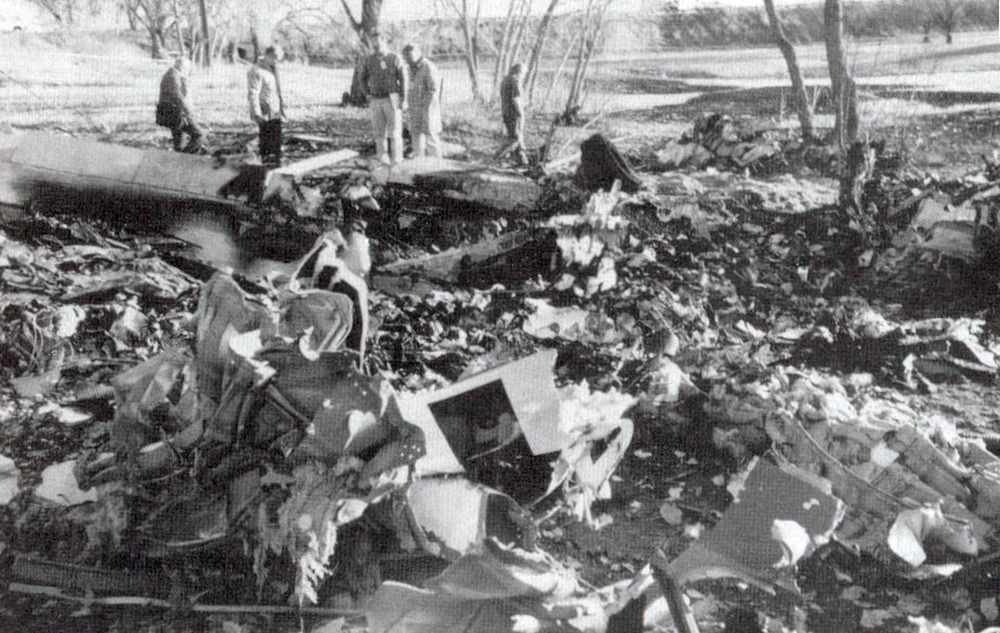
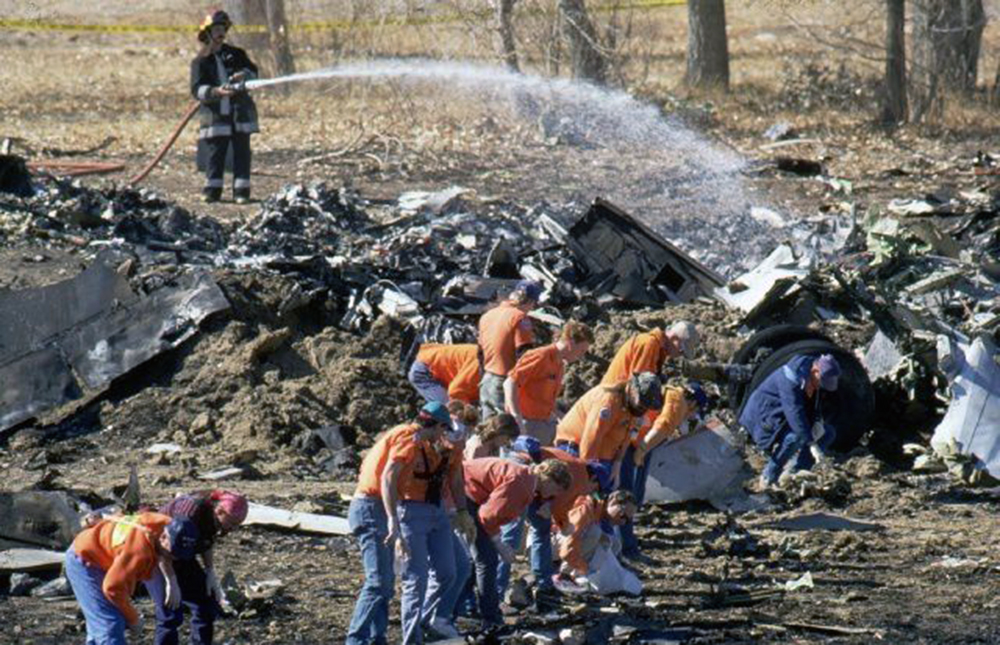
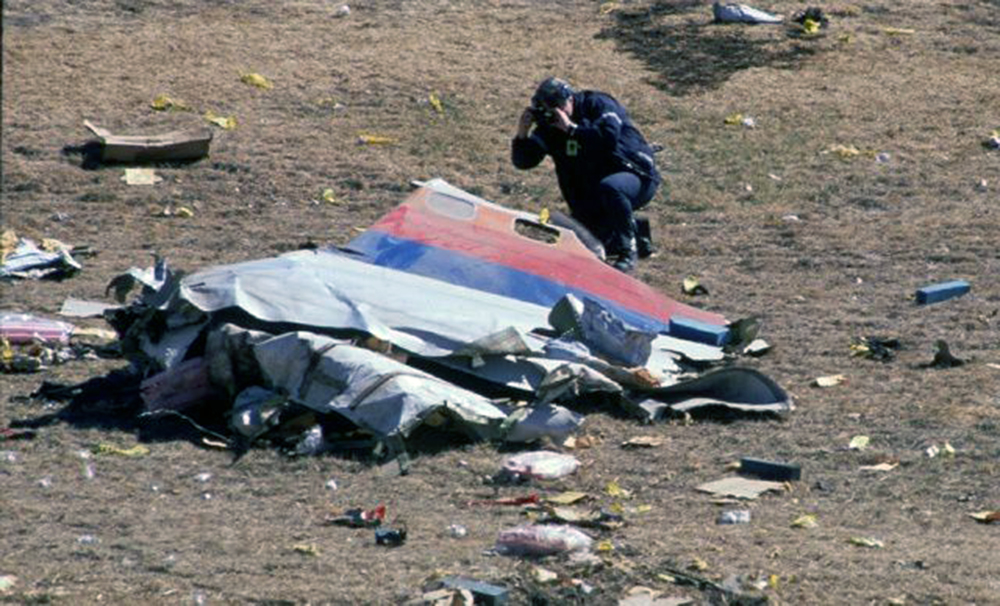
Crash of a Douglas DC-10-10 in Sioux City: 111 killed
Date & Time:
Jul 19, 1989 at 1600 LT
Registration:
N1819U
Survivors:
Yes
Schedule:
Denver - Chicago - Philadelphia
MSN:
46618
YOM:
1971
Flight number:
UA232
Crew on board:
11
Crew fatalities:
Pax on board:
285
Pax fatalities:
Other fatalities:
Total fatalities:
111
Captain / Total hours on type:
7190.00
Copilot / Total hours on type:
665
Aircraft flight hours:
43401
Aircraft flight cycles:
16997
Circumstances:
United Flight 232 departed Denver-Stapleton International Airport, Colorado, USA at 14:09 CDT for a domestic flight to Chicago-O'Hare, Illinois and Philadelphia, Pennsylvania. There were 285 passengers and 11 crew members on board. The takeoff and the en route climb to the planned cruising altitude of FL370 were uneventful. The first officer was the flying pilot. About 1 hour and 7 minutes after takeoff, at 15:16, the flightcrew heard a loud bang or an explosion, followed by vibration and a shuddering of the airframe. After checking the engine instruments, the flightcrew determined that the No. 2 aft (tail-mounted) engine had failed. The captain called for the engine shutdown checklist. While performing the engine shutdown checklist, the flight engineer observed that the airplane's normal systems hydraulic pressure and quantity gauges indicated zero. The first officer advised that he could not control the airplane as it entered a right descending turn. The captain took control of the airplane and confirmed that it did not respond to flight control inputs. The captain reduced thrust on the No. 1 engine, and the airplane began to roll to a wings-level attitude. The flightcrew deployed the air driven generator (ADG), which powers the No. 1 auxiliary hydraulic pump, and the hydraulic pump was selected "on." This action did not restore hydraulic power. At 15:20, the flightcrew radioed the Minneapolis Air Route Traffic Control Center (ARTCC) and requested emergency assistance and vectors to the nearest airport. Initially, Des Moines International Airport was suggested by ARTCC. At 15:22, the air traffic controller informed the flightcrew that they were proceeding in the direction of Sioux City; the controller asked the flightcrew if they would prefer to go to Sioux City. The flightcrew responded, "affirmative." They were then given vectors to the Sioux Gateway Airport (SUX) at Sioux City, Iowa. A UAL DC-10 training check airman, who was off duty and seated in a first class passenger seat, volunteered his assistance and was invited to the cockpit at about 15:29. At the request of the captain, the check airman entered the passenger cabin and performed a visual inspection of the airplane's wings. Upon his return, he reported that the inboard ailerons were slightly up, not damaged, and that the spoilers were locked down. There was no movement of the primary flight control surfaces. The captain then directed the check airman to take control of the throttles to free the captain and first officer to manipulate the flight controls. The check airman attempted to use engine power to control pitch and roll. He said that the airplane had a continuous tendency to turn right, making it difficult to maintain a stable pitch attitude. He also advised that the No. 1 and No. 3 engine thrust levers could not be used symmetrically, so he used two hands to manipulate the two throttles. About 15:42, the flight engineer was sent to the passenger cabin to inspect the empennage visually. Upon his return, he reported that he observed damage to the right and left horizontal stabilizers. Fuel was jettisoned to the level of the automatic system cutoff, leaving 33,500 pounds. About 11 minutes before landing, the landing gear was extended by means of the alternate gear extension procedure. The flightcrew said that they made visual contact with the airport about 9 miles out. ATC had intended for flight 232 to attempt to land on runway 31, which was 8,999 feet long. However, ATC advised that the airplane was on approach to runway 22, which was closed, and that the length of this runway was 6,600 feet. Given the airplane's position and the difficulty in making left turns, the captain elected to continue the approach to runway 22 rather than to attempt maneuvering to runway 31. The check airman said that he believed the airplane was lined up and on a normal glidepath to the field. The flaps and slats remained retracted. During the final approach, the captain recalled getting a high sink rate alarm from the ground proximity warning system (GPWS). In the last 20 seconds before touchdown, the airspeed averaged 215 KIAS, and the sink rate was 1,620 feet per minute. Smooth oscillations in pitch and roll continued until just before touchdown when the right wing dropped rapidly. The captain stated that about 100 feet above the ground the nose of the airplane began to pitch downward. He also felt the right wing drop down about the same time. Both the captain and the first officer called for reduced power on short final approach. The check airman said that based on experience with no flap/no slat approaches he knew that power would have to be used to control the airplane's descent. He used the first officer's airspeed indicator and visual cues to determine the flightpath and the need for power changes. He thought that the airplane was fairly well aligned with the runway during the latter stages of the approach and that they would reach the runway. Soon thereafter, he observed that the airplane was positioned to the left of the desired landing area and descending at a high rate. He also observed that the right wing began to drop. He continued to manipulate the No. 1 and No. 3 engine throttles until the airplane contacted the ground. He said that no steady application of power was used on the approach and that the power was constantly changing. He believed that he added power just before contacting the ground. The airplane touched down on the threshold slightly to the left of the centerline on runway 22 at 16:00. First ground contact was made by the right wing tip followed by the right main landing gear. The airplane skidded to the right of the runway and rolled to an inverted position. Witnesses observed the airplane ignite and cartwheel, coming to rest after crossing runway 17/35. Firefighting and rescue operations began immediately, but the airplane was destroyed by impact and fire. The accident resulted in 111 fatal, 47 serious, and 125 minor injuries. The remaining 13 occupants were not injured.
Probable cause:
Inadequate consideration given to human factors limitations in the inspection and quality control procedures used by United Airlines' engine overhaul facility which resulted in the failure to detect a fatigue crack originating from a previously undetected metallurgical defect located in a critical area of the stage 1 fan disk that was manufactured by General Electric Aircraft Engines. The subsequent catastrophic disintegration of the disk resulted in the liberation of debris in a pattern of distribution and with energy levels that exceeded the level of protection provided by design features of the hydraulic systems that operate the DC-10's flight controls.
Final Report:
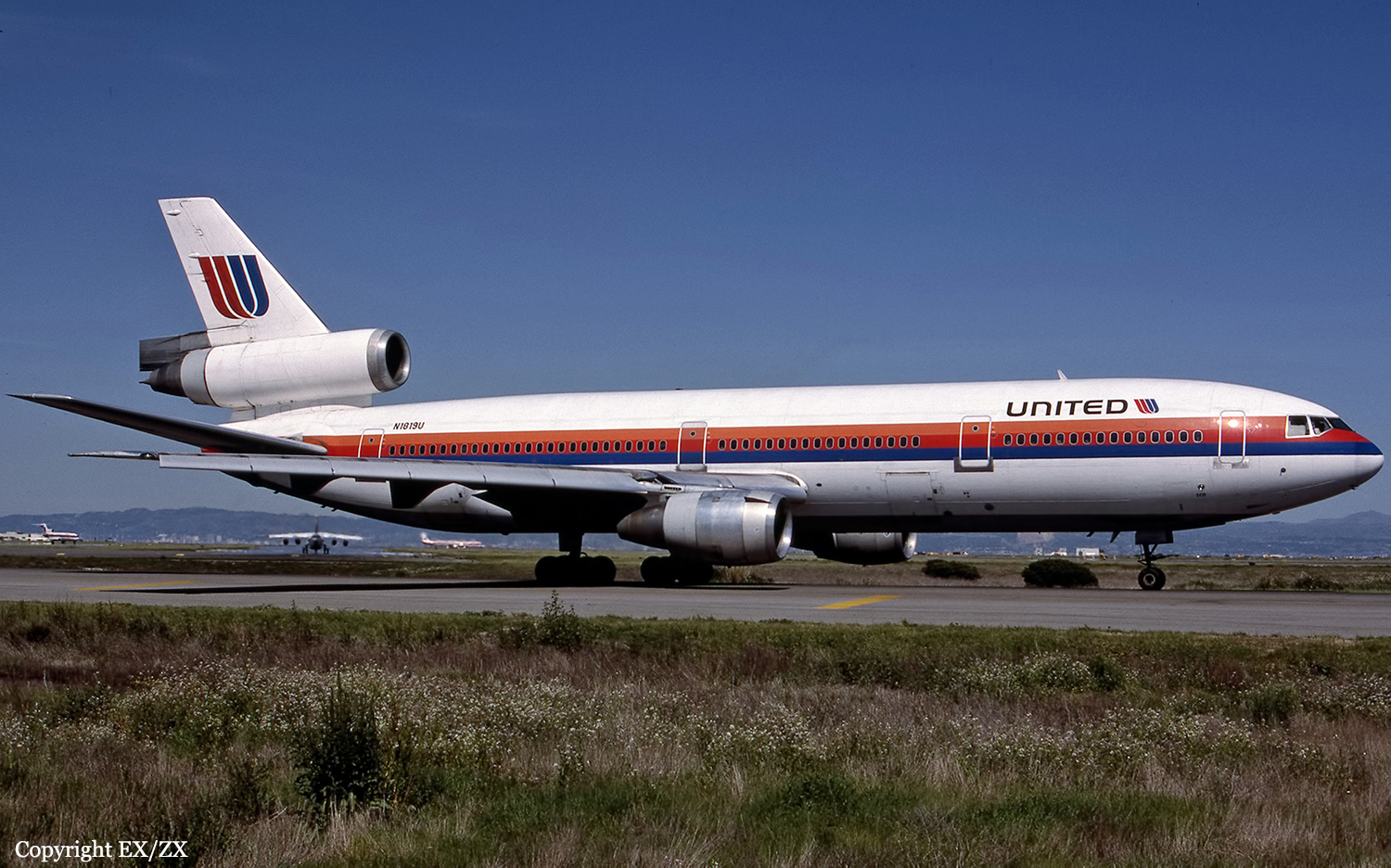



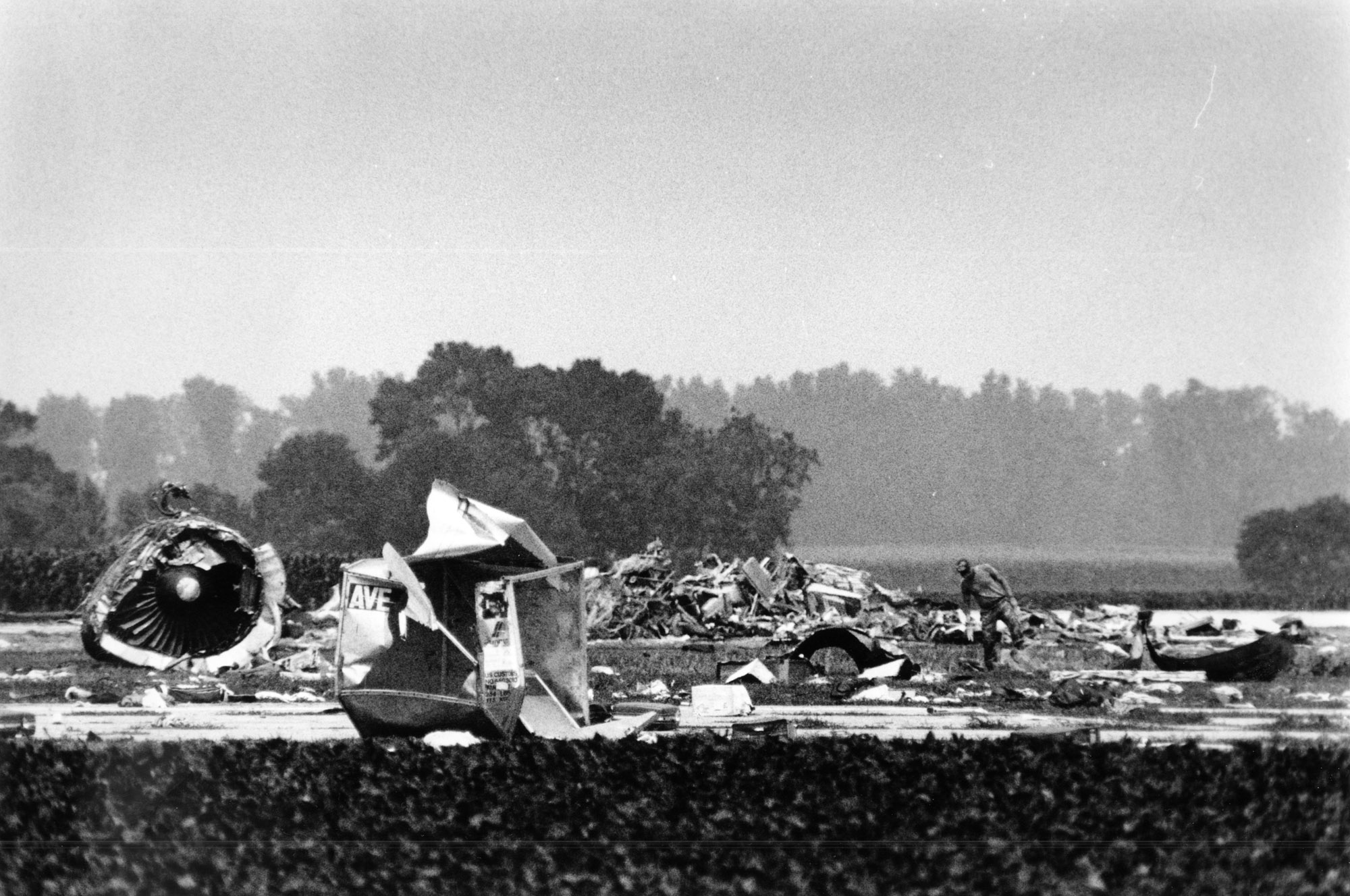


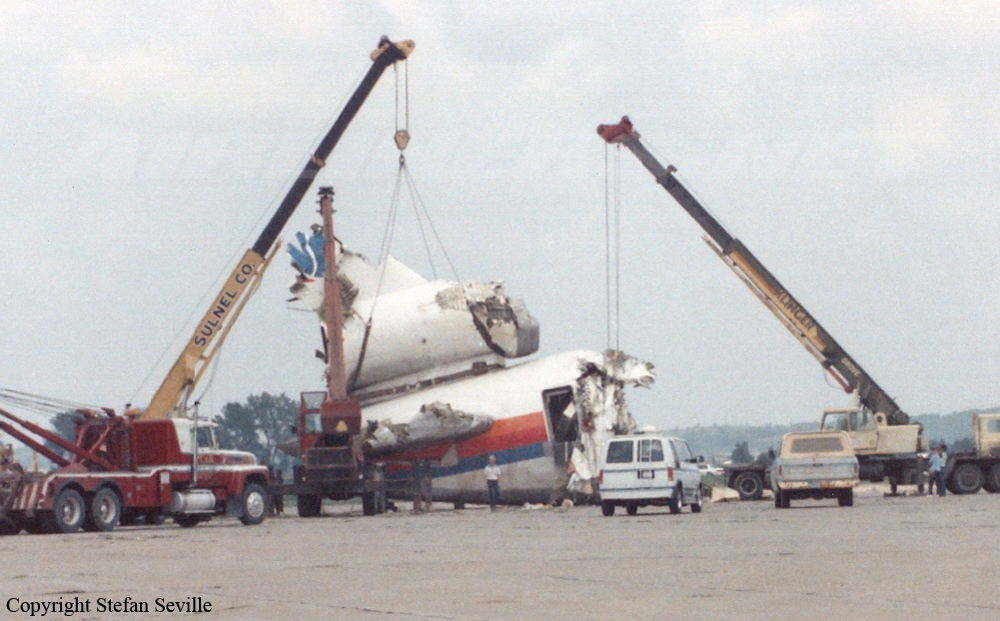



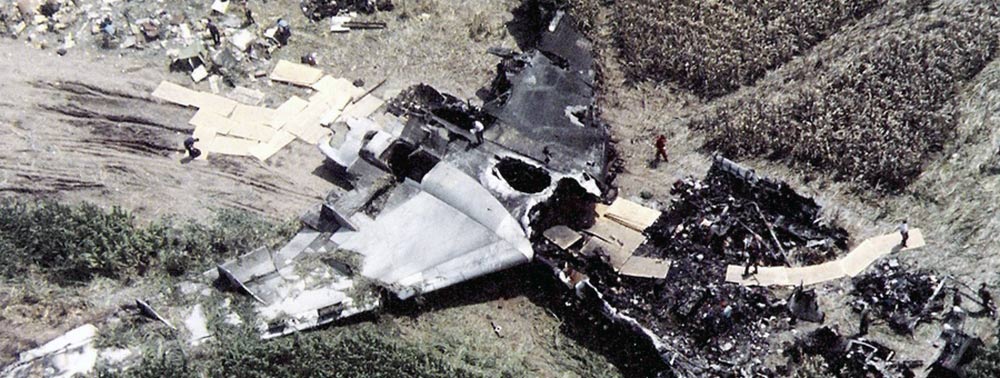
Crash of a Douglas DC-8-54F in Detroit: 3 killed
Date & Time:
Jan 11, 1983 at 0252 LT
Registration:
N8053U
Survivors:
No
Schedule:
Cleveland - Detroit - Los Angeles
MSN:
46010
YOM:
1968
Flight number:
UA2885
Crew on board:
3
Crew fatalities:
Pax on board:
0
Pax fatalities:
Other fatalities:
Total fatalities:
3
Captain / Total hours on type:
2711.00
Copilot / Total hours on type:
6493
Aircraft flight hours:
31902
Aircraft flight cycles:
13474
Circumstances:
United Flight 2885 departed Cleveland at 01:15 for a cargo flight to Los Angeles via Detroit. The DC-8 arrived at Detroit at 01:52. Cargo for Detroit was unloaded, the airplane was refueled, and cargo for Los Angeles was loaded. The engines were started, and then the crew called for taxi instructions at 02:45:58. During the taxi, the flightcrew accomplished the before takeoff checklist. The second officer called "trim" and the first officer responded "set". The flightcrew however, inadvertently overlooked setting the stabilizer trim for takeoff, and the setting of 7.5 units ANU was the previous landing trim setting. At 02:49:16, the captain, the first officer, and the second officer discussed the idea of the first officer switching seats with the second officer. They then switched seats about 02:49:40. United 2885 called for clearance onto runway 21R at 02:49:58 and was cleared for takeoff at 02:50:03. The throttles were advanced for takeoff at 02:51:05 and power stabilized 7 seconds later. Speed callouts "eighty knots" and "Vee One" were called by the captain and the airplane broke ground about 02:51:41. The airplane continued to climb with wings level to about 1,000 feet. The airplane then rolled to the right in a gradual right turn until it was in a wings vertical position (right wing down, left wing up) and crashed into a freshly plowed farm field.
Probable cause:
The flight crew's failure to follow procedural checklist requirements and to detect and correct a mistrimmed stabilizer before the aircraft became uncontrollable. Contributing to the accident was the captain allowing the second officer, who was not qualified to act as a pilot, to occupy the seat of the first officer and to conduct the take-off.
Final Report:
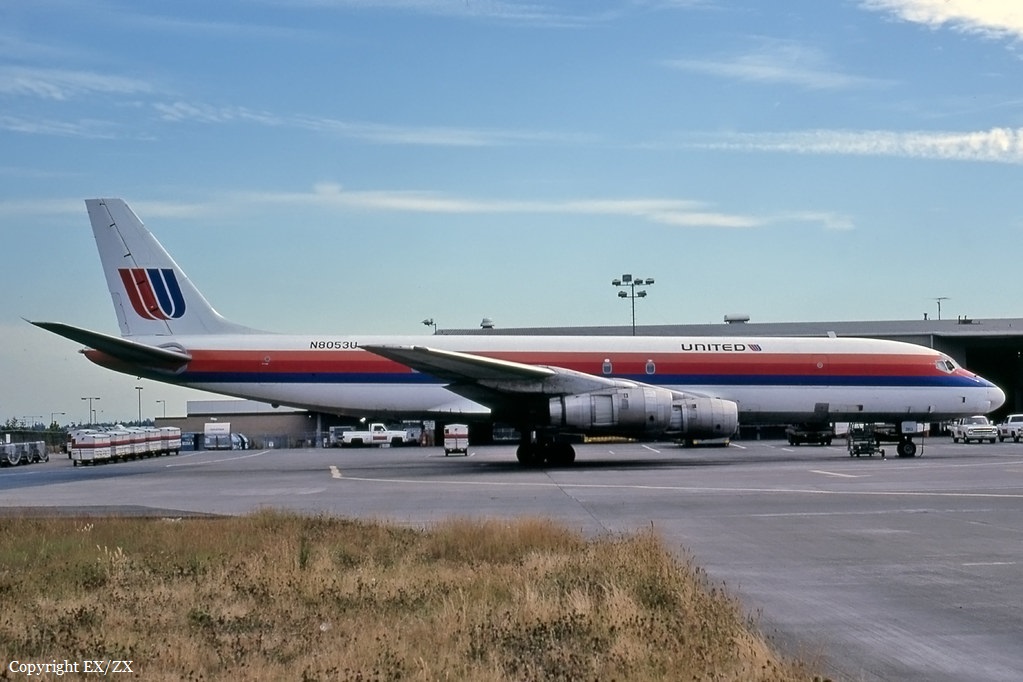
Crash of a Douglas DC-8-61 in Portland: 10 killed
Date & Time:
Dec 28, 1978 at 1815 LT
Registration:
N8082U
Survivors:
Yes
Schedule:
New York - Denver - Portland
MSN:
45972/357
YOM:
1968
Flight number:
UA173
Crew on board:
8
Crew fatalities:
Pax on board:
181
Pax fatalities:
Other fatalities:
Total fatalities:
10
Captain / Total hours on type:
5517.00
Copilot / Total hours on type:
247
Aircraft flight hours:
33114
Circumstances:
United Airlines Flight 173, departed New York-JFK on a scheduled flight to Portland International Airport (PDX), with an en route stop at Denver (DEN). The DC-8-61 took off from Denver about 14:47. The planned time en route was 2 hrs 26 min. The planned arrival time at Portland was 17:13. There was 46,700 lb of fuel on board the aircraft when it departed the gate at Denver. This fuel included the Federal Aviation Regulation requirement for fuel to destination plus 45 min and the company contingency fuel of about 20 min. At 17:05, Flight 173 called Portland Approach and advised that its altitude was 10,000 ft and its airspeed was being reduced. Portland responded and told the flight to maintain its heading for a visual approach to runway 28. Flight 173 acknowledged the approach instructions and stated, "...we have the field in sight." At 17:07, Portland Approach instructed the flight to descend and maintain 8,000 ft. Flight 173 acknowledged the instructions and advised that it was "leaving ten." At 17:09, Flight 173 received and acknowledged a clearance to continue its descent to 6,000 ft. When the DC-8 was descending through about 8,000 ft, the first officer, who was flying the aircraft, requested the wing flaps be extended to 15 degrees, then asked that the landing gear be lowered. As the landing gear extended, an unusual sound was heard and the aircraft yawed. At 17:12, Portland Approach requested, "United one seven three heavy, contact the tower, one one eight point seven." The flight responded, "negative, we'll stay with you. We'll stay at five. We'll maintain about a hundred and seventy knots. We got a gear problem. We'll let you know." Portland Approach replied, "United one seventy-three heavy roger, maintain five thousand. Turn left heading two zero zero." The flight acknowledged the instructions. At 17:14, Portland Approach advised, "United one seventy three heavy, turn left heading, one zero zero and I'll just orbit you out there 'til you get your problem." Flight 173 acknowledged the instructions. For the next 23 min, while Portland Approach was vectoring the aircraft in a holding pattern south and east of the airport, the flight crew discussed and accomplished all of the emergency and precautionary actions available to them to assure themselves that all landing gear was locked in the full down position. The second officer checked the visual indicators on top of both wings, which extend above the wing surface when the landing gear is down-and-locked. About 17:38, Flight 173 contacted the United Airlines Systems Line Maintenance Control Center in San Francisco. The captain explained to company dispatch and maintenance personnel the landing gear problem and what the flight crew had done to assure that the landing gear was fully extended. He said they were planning to land in about twenty minutes. About 17:44, the captain and the first flight attendant discussed passenger preparation, crash landing procedures, and evacuation procedures. At 17:46, the first officer asked the flight engineer, "How much fuel we got...?" The flight engineer responded, "Five thousand." About 17:50, the captain asked the flight engineer to "Give us a current card on weight. Figure about another fifteen minutes." The first officer responded, "Fifteen minutes?" To which the captain replied, "Yeah, give us three or four thousand pounds on top of zero fuel weight." The flight engineer then said, "Not enough. Fifteen minutes is gonna really run us low on fuel here." Some calculations were made and at 17:52 the flight engineer talked to Portland and discussed the aircraft's fuel state, the number of persons on board the aircraft, and the emergency landing precautions at the airport. A fuel check at 17:57 learned that there were 1,000 lb in each tank, totalling 4,000 lb of fuel. From 17:57 until 18:00, the captain and the first officer engaged in a conversation which included discussions of giving the flight attendants ample time to prepare for the emergency, cockpit procedures in the event of an evacuation after landing, whether the brakes would have antiskid protection after landing, and the procedures the captain would be using during the approach and landing. At 18:01, the flight engineer reported that the cabin would be ready in "another two or three minutes." At 18:02, the flight engineer advised, "We got about three on the fuel and that's it." The aircraft was then about 5 nmi south of the airport on a southwest heading. Portland Approach then asked Flight 173 for a status report. The first officer replied, "Yeah, we have indication our gear is abnormal. It'll be our intention, in about five minutes, to land on two eight left. We would like the equipment standing by. Our indications are the gear is down and locked. We've got our people prepared for an evacuation in the event that should become necessary." At 18:03 Portland Approach asked that Flight 173 advise them when the approach would begin. The captain responded, "...They've about finished in the cabin. I'd guess about another three, four, five minutes." At this time the aircraft was about 8 nmi south of the airport on a southwesterly heading. At 18:06, the first flight attendant entered the cockpit and reported that they were ready in the passenger cabin. At this time the aircraft was about 17 nmi south of the airport on a southwesterly heading. The captain then said, "Okay. We're going to go in now. We should be landing in about five minutes." Almost simultaneous with this comment, the first officer said, "I think you just lost number four ..." followed immediately by advice to the flight engineer, "... better get some crossfeeds open there or something." At 18:06:46, the first officer told the captain, "We're going to lose an engine..." At 18:06:49, the first officer again stated, "We're losing an engine." Again the captain asked, "Why?" The first officer responded, "Fuel." The captain replied, "Why?" Between 18:06:52 and 18:07:06, the CVR revealed conflicting and confusing conversation between flight crewmembers as to the aircraft's fuel state. At 18:07:06, the first officer said, "It's flamed out." At 18:07:12, the captain called Portland Approach and requested, "...would like clearance for an approach into two eight left, now." The aircraft was about 19 nmi south southwest of the airport and turning left. This was the first request for an approach clearance from Flight 173 since the landing gear problem began. Portland Approach immediately gave the flight vectors for a visual approach to runway 28L. The flight turned toward the vector heading of 010 degrees. At 18:09:21, the captain advised Portland Approach, "United, seven three is going to turn toward the airport and come on in." After confirming Flight 173's intentions, Portland Approach cleared the flight for the visual approach to runway 28L. At 18:10:17, the captain requested that the flight engineer "reset that circuit breaker momentarily. See if we get gear lights." The flight engineer complied with the request. At 18:10:47, the captain requested the flight's distance from the airport. Portland approach responded, "I'd call it eighteen flying miles." At 18:12:42, the captain made another request for distance. Portland Approach responded, "Twelve flying miles." The flight was then cleared to contact Portland tower. At 18:13:21, the flight engineer stated, "We've lost two engines, guys." At 18:13:25, he stated, "We just lost two engines - one and two." At 1813:38, the captain said, They're all going. We can't make Troutdale." The first officer said, "We can't make anything." At 18:13:46, the captain told the first officer, "Okay. Declare a mayday." At 18:13:50, the first officer called Portland International Airport tower and declared, "Portland tower, United one seventy three heavy, Mayday. We're--the engines are flaming out. We're going down. We're not going to be able to make the airport." This was the last radio transmission from Flight 173. About 18:15, the aircraft crashed into a wooded section of a populated area of suburban Portland about 6 nmi east southeast of the airport. There was no fire. The wreckage path was about 1,554 ft long and about 130 ft wide. Two crew members and eight passengers were killed, 34 other occupants were injured.
Probable cause:
The failure of the captain to monitor properly the aircraft's fuel state and to properly respond to the low fuel state and the crew member's advisories regarding fuel state. This resulted in fuel exhaustion to all engines. His inattention resulted from preoccupation with a landing gear malfunction and preparations for a possible emergency landing. Contributing to the accident was the failure of the other two flight crewmembers either to fully comprehend the criticality of the fuel state or to successfully communicate their concern to the captain. The following findings were reported:
- Except for the failure of the piston rod on the right main landing gear retract cylinder assembly, with the resulting damage to the landing gear position indicating system switch, there was no evidence of a failure or malfunction of the aircraft’s structure, powerplants, flight controls, or systems,
- All of the aircraft’s engines flamed out because of fuel exhaustion about 1815, one hour and 3 minutes after it entered into hold and 3 hrs 27 min after it departed Denver,
- Fuel exhaustion was predictable. The crew failed to equate the fuel remaining with time and distance from the airport,
- No pertinent malfunctions were found during examinations of the fuel quantity measuring system,
- The captain failed to make decisive timely decisions,
- The captain failed to relate time, distance from the airport, and the aircraft’s fuel state as his attention was directed completely toward the diagnosis of the gear problem and preparation of the passengers for an emergency landing. The gear problem had a disorganizing effect on the captain's performances,
- Neither the first officer nor the flight engineer conveyed any concern about fuel exhaustion to the captain until the accident was inevitable.
- Except for the failure of the piston rod on the right main landing gear retract cylinder assembly, with the resulting damage to the landing gear position indicating system switch, there was no evidence of a failure or malfunction of the aircraft’s structure, powerplants, flight controls, or systems,
- All of the aircraft’s engines flamed out because of fuel exhaustion about 1815, one hour and 3 minutes after it entered into hold and 3 hrs 27 min after it departed Denver,
- Fuel exhaustion was predictable. The crew failed to equate the fuel remaining with time and distance from the airport,
- No pertinent malfunctions were found during examinations of the fuel quantity measuring system,
- The captain failed to make decisive timely decisions,
- The captain failed to relate time, distance from the airport, and the aircraft’s fuel state as his attention was directed completely toward the diagnosis of the gear problem and preparation of the passengers for an emergency landing. The gear problem had a disorganizing effect on the captain's performances,
- Neither the first officer nor the flight engineer conveyed any concern about fuel exhaustion to the captain until the accident was inevitable.
Final Report:
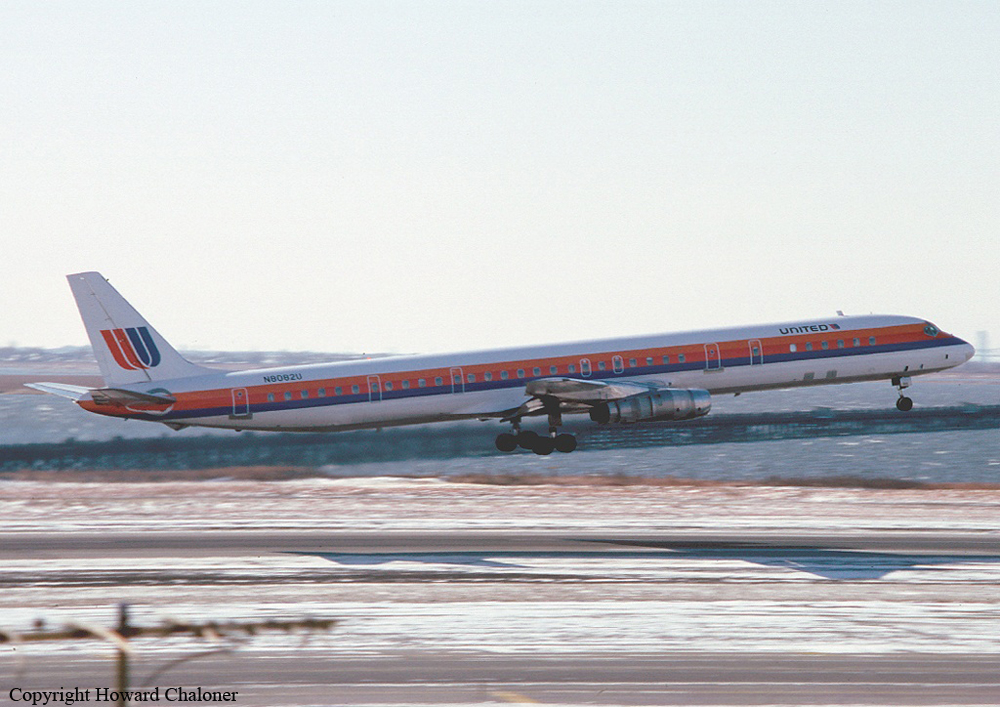

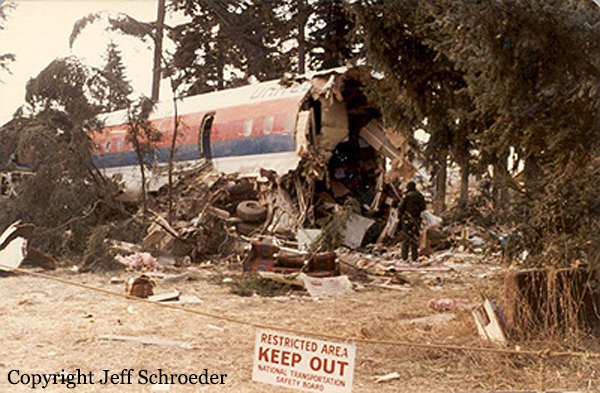


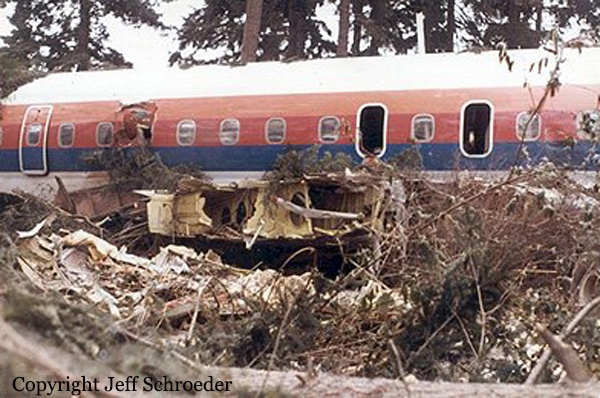
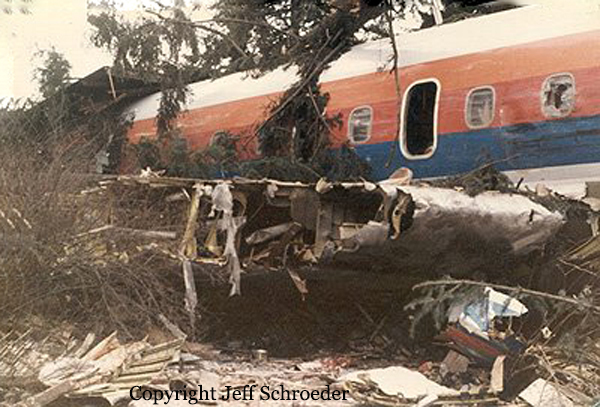


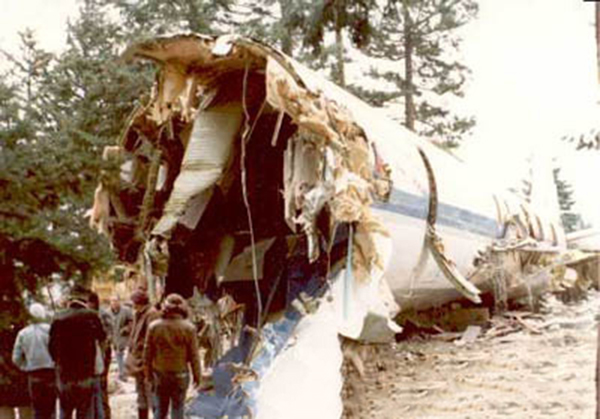
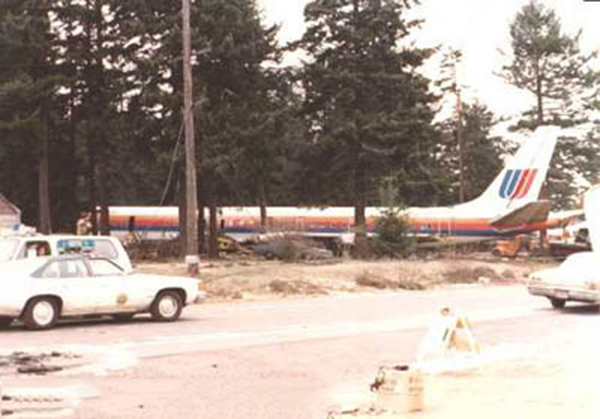
Crash of a Douglas DC-8-54F near Kaysville: 3 killed
Date & Time:
Dec 18, 1977 at 0138 LT
Registration:
N8047U
Survivors:
No
Schedule:
San Francisco – Salt Lake City – Chicago
MSN:
45880/275
YOM:
1966
Flight number:
UA2860
Crew on board:
3
Crew fatalities:
Pax on board:
0
Pax fatalities:
Other fatalities:
Total fatalities:
3
Captain / Total hours on type:
4148.00
Copilot / Total hours on type:
366
Aircraft flight hours:
29832
Circumstances:
About 0138:28 m.s.t. on December 18, 1977, a United Airlines, Inc., DC-8F-54 cargo aircraft, operating as Flight 2860, crashed into a mountain in the Wasatch Range near Kaysville, Utah. The three flightcrew members, the only persons aboard the aircraft, were killed, and the aircraft was destroyed. Flight 2860 encountered electrical system problems during its descent and approach to the Salt Lake City Airport. The flight requested a holding clearance which was given by the approach controller and accepted by the flight crew. The flight then requested and received clearance to leave the approach control frequency for a "little minute" to communicate with company maintenance. Flight 2860 was absent from the Approach control frequency for 7 1/2 minutes. During that time, the flight entered an area near hazardous terrain. The approach controller recognized Flight 2860's predicament but was unable to contact the flight. When flight 2860 returned to approach control frequency, the controller told the flight that it was too close to terrain on its right and to make a left turn. After the controller repeated the instructions, the flight began a left turn and about 15 seconds later the controller told the flight to climb immediately to 8,000 feet. Eleven seconds later, the flight reported that it was climbing from 6,000 feet to 8,000 feet. The flight crashed into a 7,665-foot mountain near the 7,200-foot level. The aircraft was destroyed and all three crew members were killed.
Probable cause:
The approach controller's issuance and the flight crew's acceptance of an incomplete and ambiguous holding clearance in combination with the flight crew's failure to adhere to prescribed impairment-of-communications procedures and prescribed holding procedures. The controller's and flight crew's actions are attributed to probable habits of imprecise communication and of imprecise adherence to procedures developed through years of exposure to operations in a radar environment. Contributing to the accident was the failure of the aircraft's No.1 electrical system for unknown reasons.
Final Report:
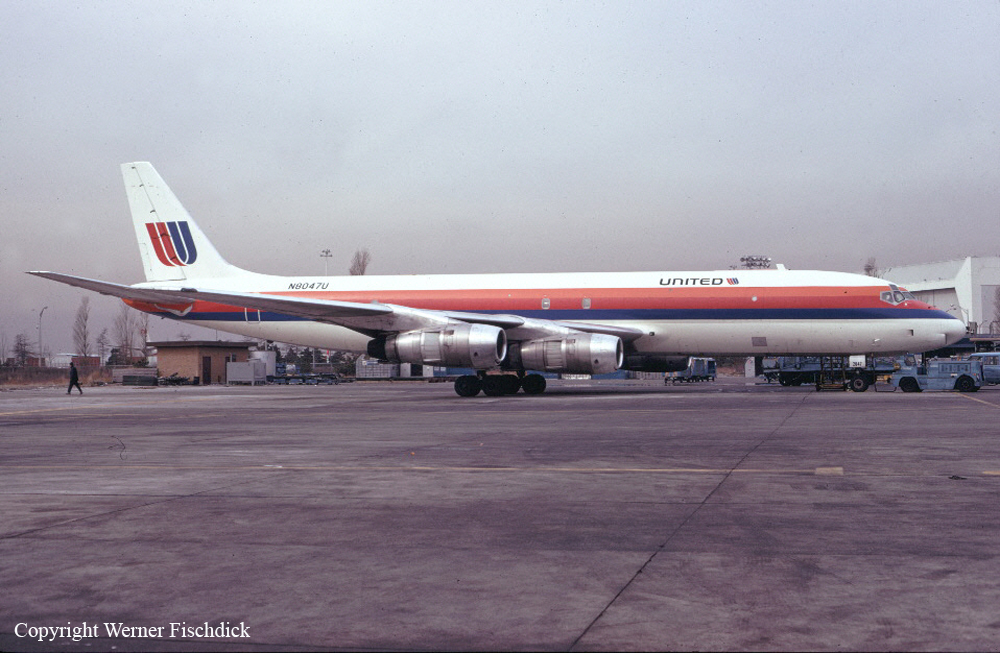
Crash of a Boeing 737-222 in Chicago: 45 killed
Date & Time:
Dec 8, 1972 at 1428 LT
Registration:
N9031U
Survivors:
Yes
Schedule:
Washington DC - Chicago - Omaha
MSN:
19069/75
YOM:
1968
Flight number:
UA553
Crew on board:
6
Crew fatalities:
Pax on board:
55
Pax fatalities:
Other fatalities:
Total fatalities:
45
Captain / Total hours on type:
2435.00
Copilot / Total hours on type:
1676
Aircraft flight hours:
7247
Circumstances:
Flight UA553 departed Washington-National Airport at 1250LT for Omaha with an intermediate stop at Chicago-Midway Airport. Chicago ARTCC cleared the crew to descend to 4000 feet and the flight was given vectors for a Midway Airport runway 31L localizer course. At 14:19 the flight was transferred to Chicago Approach Control which later requested UA553 to slow down to 180 knots and later down to 160 knots. After issuing a descent clearance down to 2000 feet at 14:23 the controller requested the flight to slow down to approach speed because of separation between UA553 and a preceding Aero Commander. At 14:24 the Aero Commander passed the Outer Marker and was cleared to land on runway 31L. Two minutes later UA553 passed the Outer Marker inbound. Then, at 14:27:04 the air traffic controller decided to issue a missed approach clearance: "United 553 execute a missed approach make a left turn to a heading of 180 climb to 2000". At the same time, having just reached 1000 feet, the stick shaker suddenly activated. Full power was applied and the gear was retracted in an attempt to execute a missed approach. The Boeing continued to descend however, attaining a high nose up attitude (of at least 30deg, according to some survivors). The aircraft then clipped a tree and impacted trees, houses, utility pole cables and garages before coming to rest. Post crash fire destroyed part of the fuselage.
Probable cause:
The captain's failure to exercise positive flight management during the execution of a non-precision approach, which culminated in a critical deterioration of airspeed into the stall regime where level flight could no longer be maintained.
Final Report:
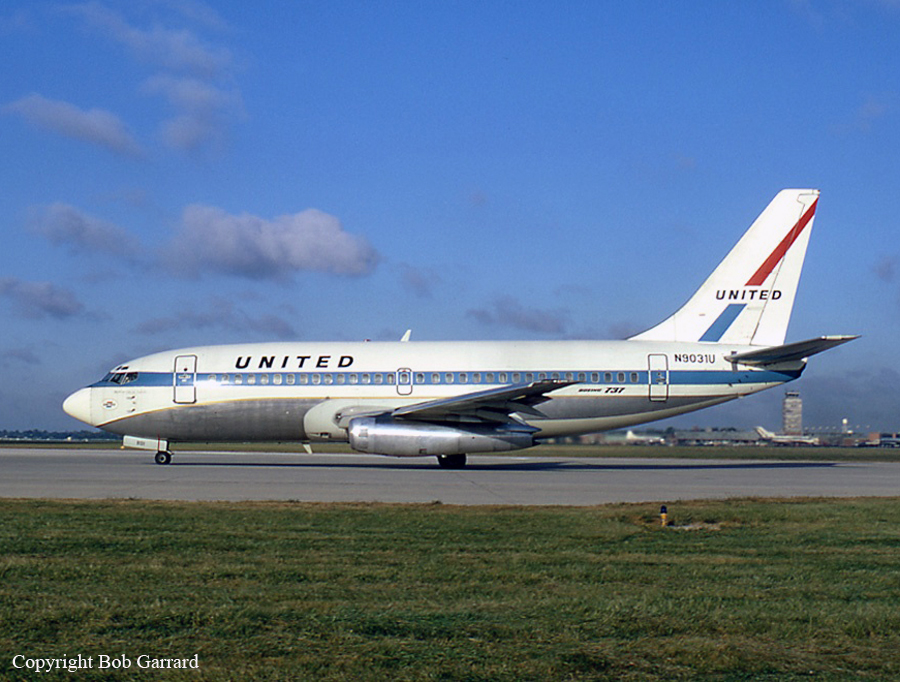

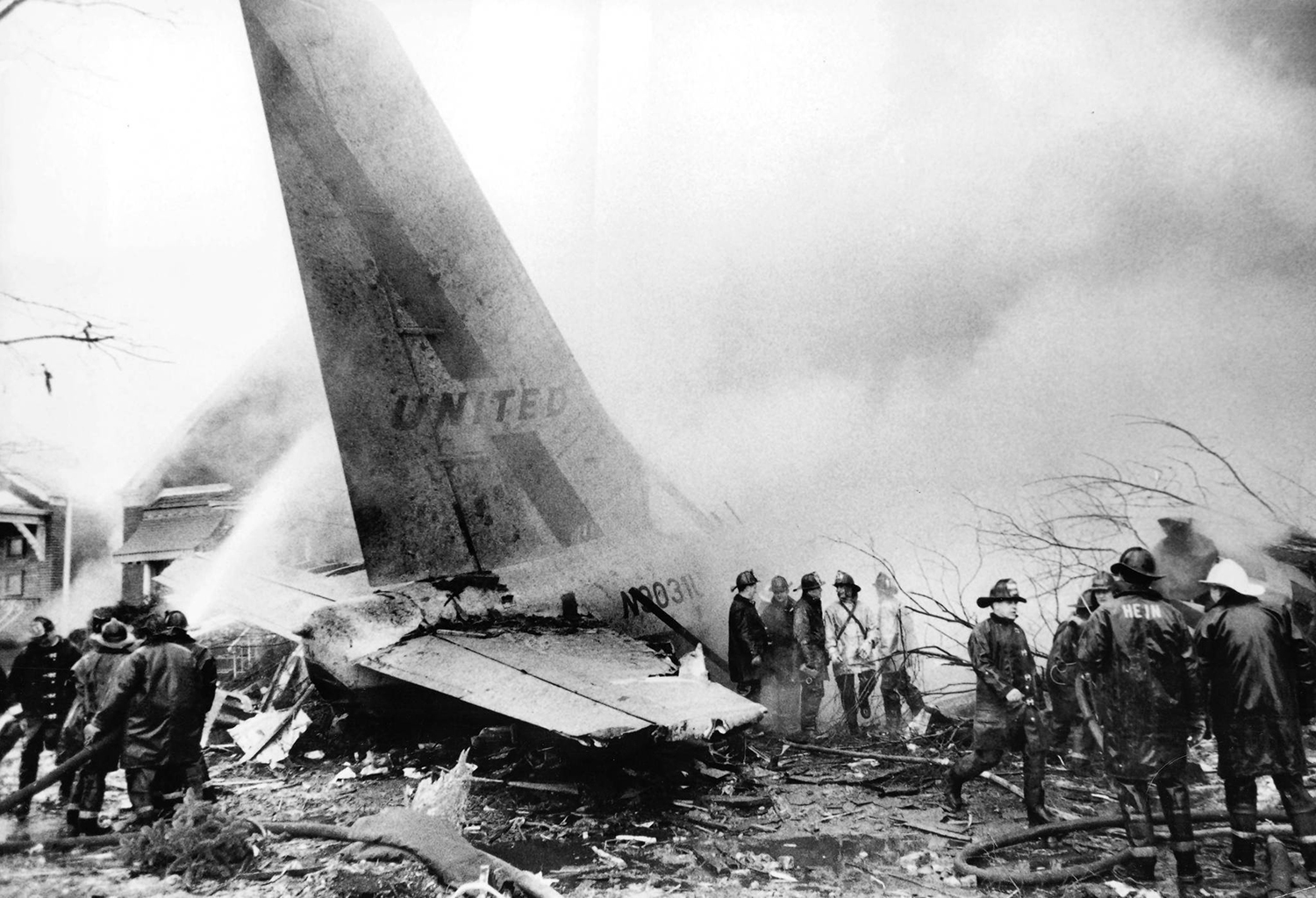

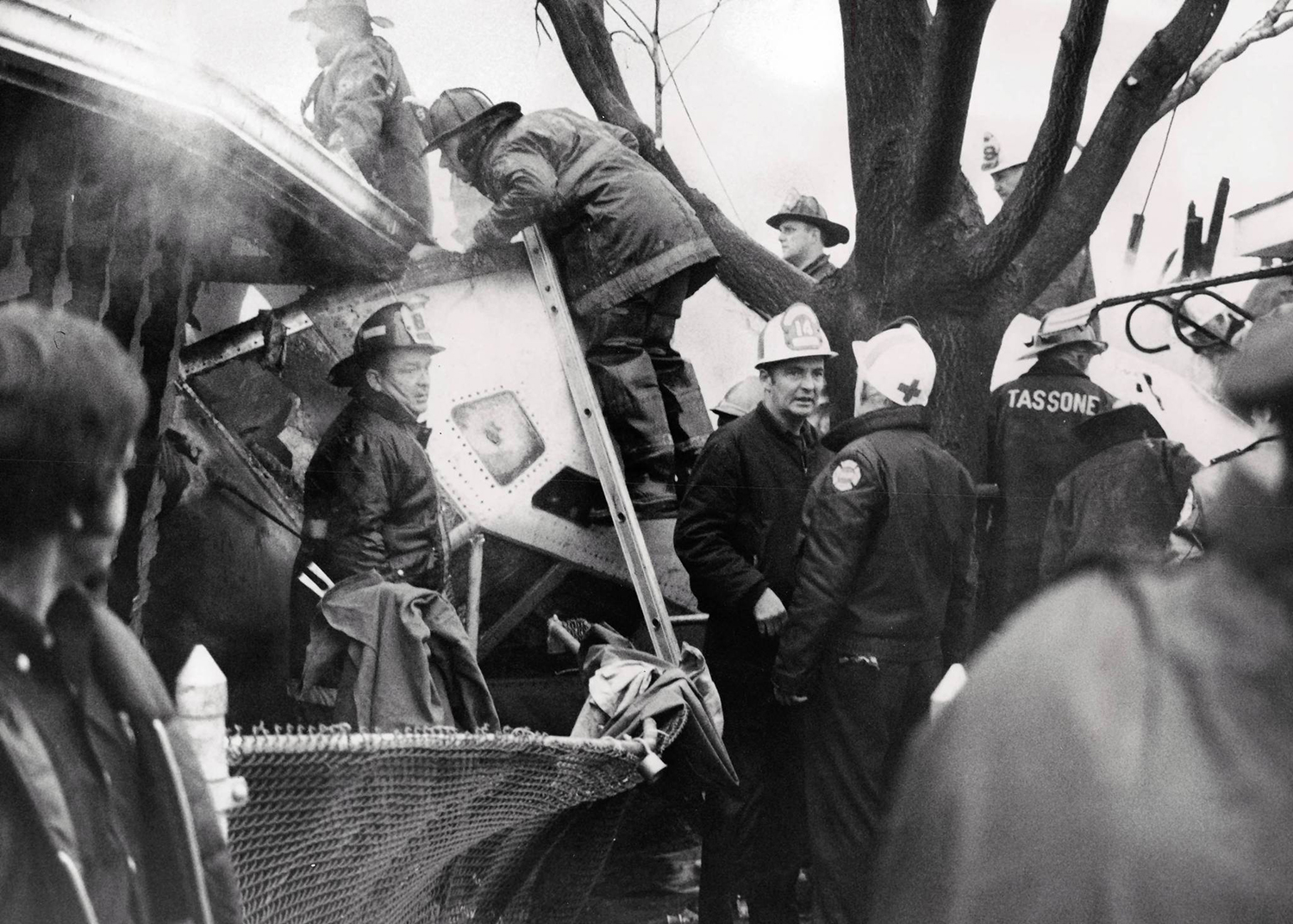

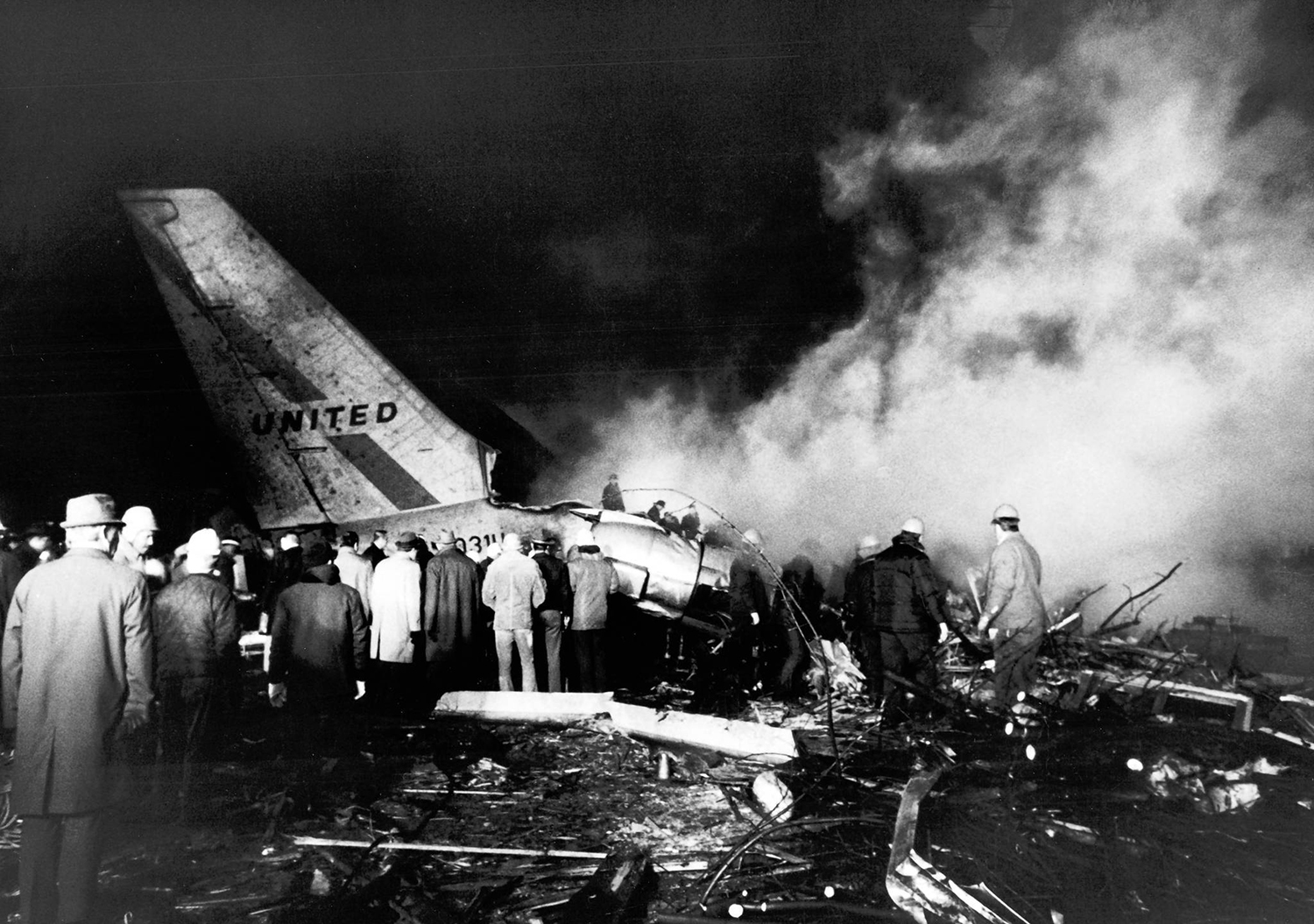

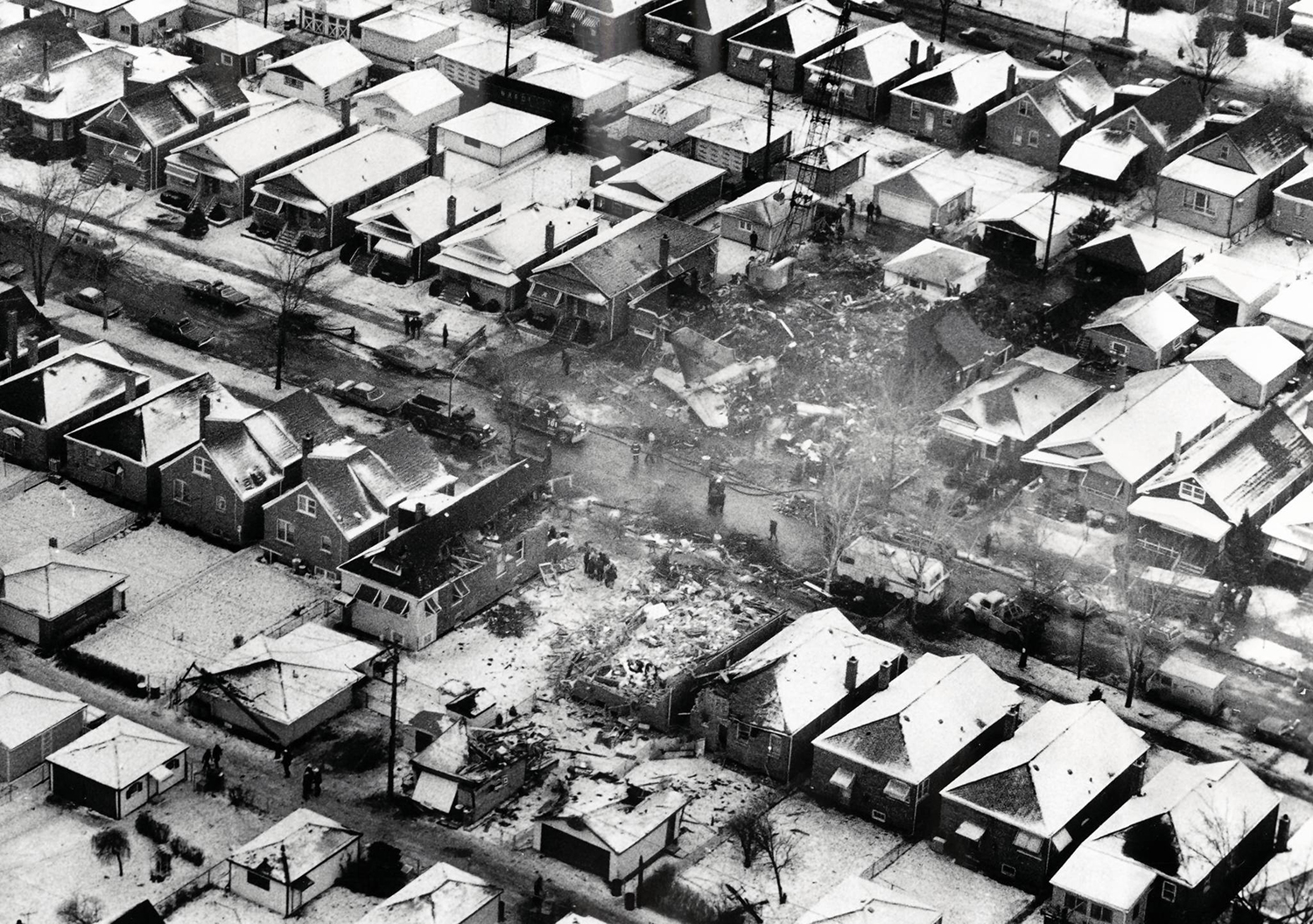



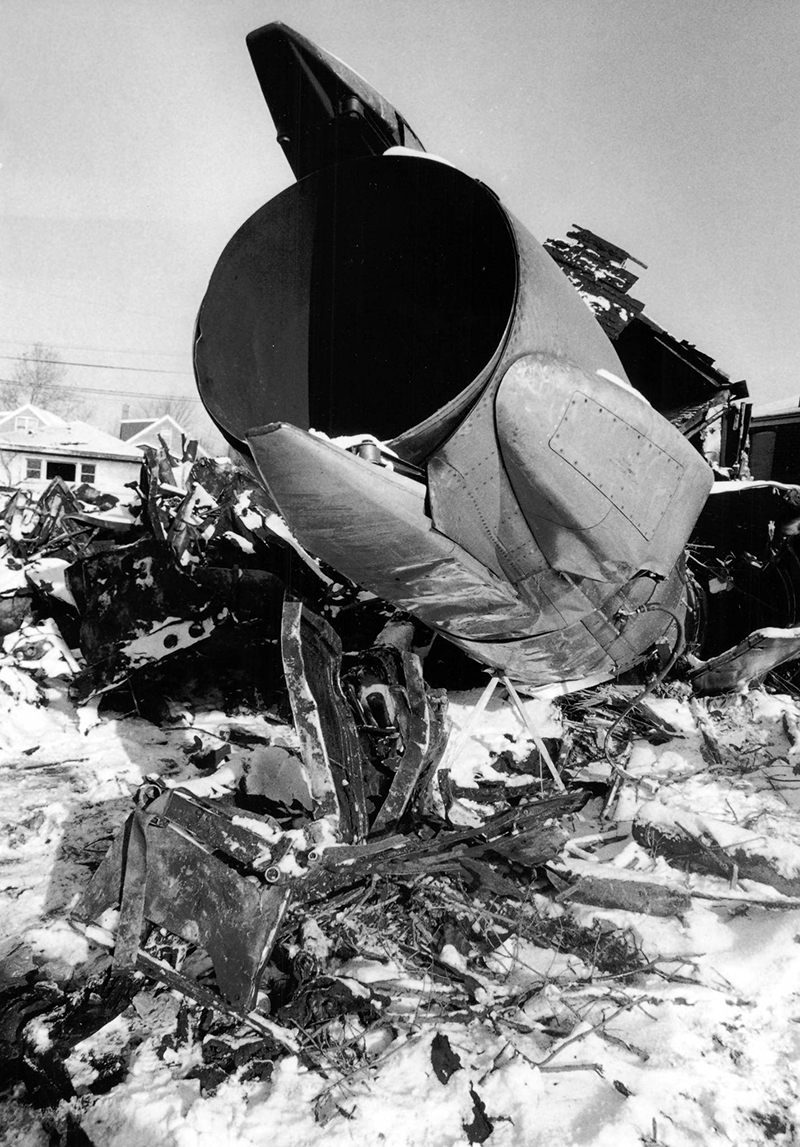
Crash of a Boeing 737-222 in Philadelphia
Date & Time:
Jul 19, 1970 at 1907 LT
Registration:
N9005U
Survivors:
Yes
Schedule:
Philadelphia - Rochester
MSN:
19043/18
YOM:
1968
Flight number:
UA611
Crew on board:
6
Crew fatalities:
Pax on board:
55
Pax fatalities:
Other fatalities:
Total fatalities:
0
Captain / Total hours on type:
517.00
Copilot / Total hours on type:
736
Aircraft flight hours:
3956
Circumstances:
At 18:50 Boeing 737 "City of Bristol" taxied to runway 09 for departure. At 19:05 the first officer, who was pilot flying, initiated the takeoff roll. Shortly after rotation, at a speed above V2, a loud bang was heard and the aircraft veered to the right. The captain moved both throttles forward but there seemed to be no response. The captain then made the instantaneous decision to set the aircraft back on the runway. The aircraft touched down 1075 feet short of the runway end. The 737 continued of the end of the runway and across the blast pad. It crossed a field, passed through a 6-foot high aluminum chain link fence into an area covered with high grass, weeds and brush. The aircraft came to rest 1634 feet past the end of the runway.
Probable cause:
The termination of the take-off, after the No.1 engine failed, at a speed above V2 at a height of approximately 50 feet, with insufficient runway remaining to effect a safe landing. The captain's decision and his action to terminate the take-off were based on the erroneous judgment that both engines had failed.
Final Report:
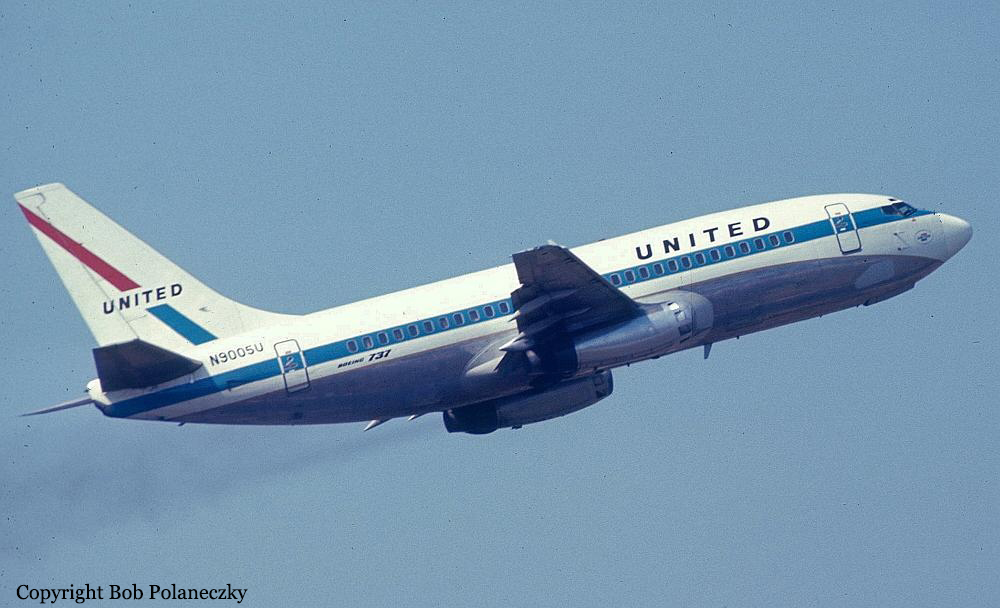
Crash of a Boeing 727-22C off Los Angeles: 38 killed
Date & Time:
Jan 18, 1969 at 1821 LT
Registration:
N7434U
Survivors:
No
Schedule:
Los Angeles – Denver – Milwaukee
MSN:
19891/631
YOM:
1968
Flight number:
UA266
Crew on board:
6
Crew fatalities:
Pax on board:
32
Pax fatalities:
Other fatalities:
Total fatalities:
38
Captain / Total hours on type:
1908.00
Copilot / Total hours on type:
1842
Aircraft flight hours:
1036
Circumstances:
Boeing 727-22C N7434U operated Flight 266 from Los Angeles to Denver, CO and Milwaukee, WI. The aircraft had been operating since January 15, 1969, with the No. 3 generator inoperative. This was allowed because according to the Minimum Equipment List, the aircraft is airworthy with only two generators operable provided certain procedures are followed and electrical loads are monitored during flight. Flight 266 was scheduled to depart the gate at 17:55, but was delayed until 18:07 because of the inclement weather and loading problems. The flight commenced its takeoff roll on runway 24 at approximately 18:17. At 18:18:30 the sound of an engine fire warning bell was heard in the cockpit. The crew reported a no. 1 engine fire warning and stated that they wanted to return to the airport. Shortly after shutdown of the No. 1 engine, electrical power from the remaining generator (No. 2) was lost. Following loss of all generator power, the standby electrical system either was not activated or failed to function. Electrical power at a voltage level of approximately 50 volts was restored approximately a minute and a half after loss of the No. 2 generator. The duration of this power restoration was just 9 to 15 seconds. The Boeing descended and struck the sea 11.3 miles west of the airport. The ocean depth at this point is approximately 950 feet.
Probable cause:
The loss of attitude orientation during a night, instrument departure in which all attitude instruments were disabled by loss of electrical power. The Board has been unable to determine (a) why all generator power was lost or (b) why the standby electrical power system either was not activated or failed to function.
Final Report:

